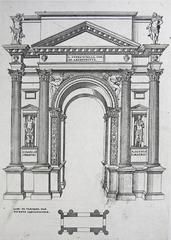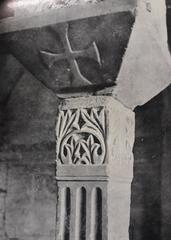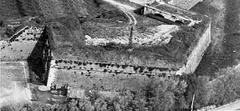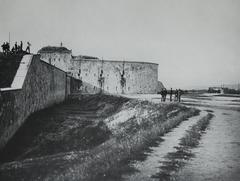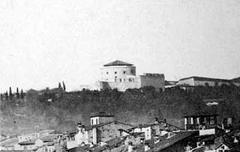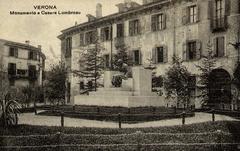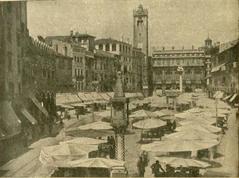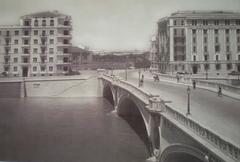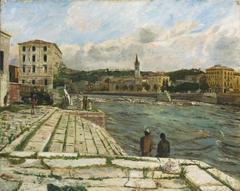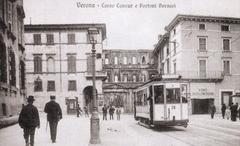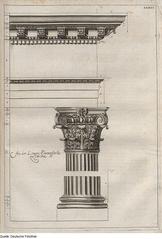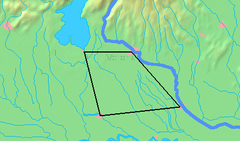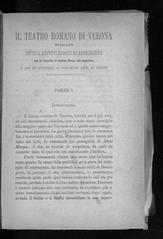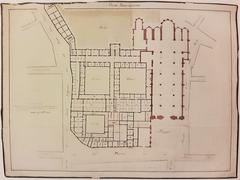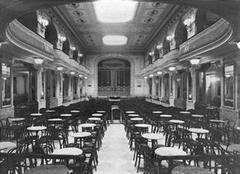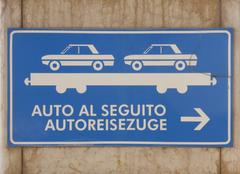
Comprehensive Guide to Visiting Castelvecchio Bridge, Verona, Italy
Date: 16/08/2024
Introduction
The Castelvecchio Bridge, also known as the Scaligero Bridge, is a medieval masterpiece situated in the heart of Verona, Italy. Constructed in the 14th century by Cangrande II della Scala of the influential Scaligeri family, this bridge serves as a testament to medieval engineering and architectural brilliance. Spanning the Adige River with its distinctive red brick and white stone design, the Castelvecchio Bridge not only facilitated strategic military maneuvers but also became an integral part of Verona’s rich cultural tapestry. Today, it stands as a symbol of resilience, having been meticulously reconstructed after World War II when retreating German forces destroyed it. This guide covers everything you need to know about visiting this iconic landmark, from its historical significance and architectural details to practical visitor information, including ticket prices, visiting hours, and travel tips. Whether you’re a history enthusiast or a casual traveler, the Castelvecchio Bridge offers a unique glimpse into Verona’s storied past, making it a must-visit destination (Veneto Way, Wikipedia, ItalyScapes).
Table of Contents
- [Introduction](#introductionintroduction)
- [History of Castelvecchio Bridge](#history-of-castelvecchio-bridgehistory-of-castelvecchio-bridge)
- [Origins and Construction](#origins-and-constructionorigins-and-construction)
- [Architectural Significance](#architectural-significancearchitectural-significance)
- [Historical Events](#historical-eventshistorical-events)
- [The Scaligeri Family](#the-scaligeri-familythe-scaligeri-family)
- [The Bridge in Modern Times](#the-bridge-in-modern-timesthe-bridge-in-modern-times)
- [Visitor Information](#visitor-informationvisitor-information)
- [Ticket Prices and Visiting Hours](#ticket-prices-and-visiting-hoursticket-prices-and-visiting-hours)
- [Travel Tips](#travel-tipstravel-tips)
- [Nearby Attractions](#nearby-attractionsnearby-attractions)
- [Accessibility](#accessibilityaccessibility)
- [Special Events and Guided Tours](#special-events-and-guided-toursspecial-events-and-guided-tours)
- [Preservation Efforts](#preservation-effortspreservation-efforts)
- [Cultural Impact](#cultural-impactcultural-impact)
- [Visitor Experience](#visitor-experiencevisitor-experience)
- [FAQ](#faqfaq)
- [Conclusion](#conclusionconclusion)
History of Castelvecchio Bridge
Origins and Construction
The Castelvecchio Bridge, also known as the Scaligero Bridge, is an iconic medieval structure in Verona, Italy. It was constructed in the 14th century by Cangrande II della Scala, a member of the influential Scaligeri family. The bridge was built as part of the larger Castelvecchio fortress, which served both as a military stronghold and a princely residence. The construction of the bridge began around 1354 and was completed in 1356. The bridge’s primary purpose was to provide an escape route for the Scaligeri family in times of siege and to facilitate access to the northern parts of the city (Veneto Way).
Architectural Significance
The Castelvecchio Bridge is a remarkable example of medieval engineering and architecture. It spans the Adige River with three main arches, the largest of which measures approximately 48.7 meters, making it one of the longest bridge spans of its time. The bridge’s design is characterized by its robust and imposing appearance, with battlements and fortified towers that accentuate its military purpose. The use of red brick and white stone from the Valpolicella region gives the bridge its distinctive look (Veneto Way).
Historical Events
Throughout its history, the Castelvecchio Bridge has witnessed numerous significant events. During the Venetian rule in the 15th and 16th centuries, the bridge continued to serve as a crucial military asset. In 1797, Napoleon’s troops destroyed part of the bridge during their campaign in Italy. However, it was later rebuilt by the Austrians in the early 19th century. The bridge suffered extensive damage again during World War II when retreating German forces blew it up in 1945. The bridge was meticulously reconstructed in the post-war period, with efforts to preserve its historical integrity (Veneto Way).
The Scaligeri Family
The Scaligeri family, also known as the Della Scala family, played a pivotal role in the history of Verona and the construction of the Castelvecchio Bridge. The family ruled Verona from the 13th to the 14th centuries and were known for their military prowess and architectural contributions. Cangrande II della Scala, who commissioned the bridge, was a notable figure in the family’s history. His reign was marked by both internal strife and external conflicts, necessitating the construction of formidable defensive structures like the Castelvecchio fortress and bridge (Veneto Way).
The Bridge in Modern Times
Today, the Castelvecchio Bridge stands as a testament to Verona’s rich history and architectural heritage. It is one of the city’s most visited landmarks, attracting tourists from around the world. The bridge is now exclusively pedestrian, allowing visitors to walk across and enjoy panoramic views of the Adige River and the surrounding cityscape. The adjacent Castelvecchio Museum, housed within the fortress, offers a comprehensive collection of art, sculptures, and historical artifacts, providing further insights into the region’s history (Veneto Way).
Visitor Information
Ticket Prices and Visiting Hours
The Castelvecchio Bridge itself is free to visit, but entry to the adjacent Castelvecchio Museum requires a ticket. The museum is open from Tuesday to Sunday, 8:30 AM to 7:30 PM, with the last admission at 6:45 PM. Ticket prices are €6 for adults, with discounts available for children, seniors, and groups.
Travel Tips
To make the most of your visit, consider arriving early in the morning or late in the afternoon to avoid the crowds. Comfortable walking shoes are recommended as the bridge and surrounding areas are best explored on foot. Don’t forget your camera to capture the stunning views!
Nearby Attractions
While visiting the Castelvecchio Bridge, you can also explore other nearby attractions such as the Verona Arena, Piazza delle Erbe, and Juliet’s House. Each of these sites offers a unique glimpse into Verona’s rich cultural and historical tapestry.
Accessibility
The Castelvecchio Bridge is accessible to visitors with mobility issues, with ramps available at both ends. The museum also provides accessible facilities, ensuring that all visitors can enjoy their experience.
Special Events and Guided Tours
The Castelvecchio Museum offers guided tours that provide deeper insights into the history and significance of the bridge and fortress. Special events, such as historical reenactments and art exhibitions, are also held throughout the year.
Preservation Efforts
Preserving the Castelvecchio Bridge has been a priority for local authorities and heritage organizations. The post-World War II reconstruction efforts were guided by a commitment to maintaining the bridge’s historical authenticity. Modern preservation techniques have been employed to ensure the bridge remains structurally sound while retaining its original aesthetic. Regular maintenance and conservation work are carried out to protect the bridge from environmental factors and the wear and tear of time (Veneto Way).
Cultural Impact
The Castelvecchio Bridge holds a special place in the cultural and historical narrative of Verona. It symbolizes the city’s resilience and its ability to preserve its heritage through centuries of change and conflict. The bridge has been featured in various literary and artistic works, further cementing its status as an iconic symbol of Verona. Its historical significance and architectural beauty continue to inspire admiration and scholarly interest (Veneto Way).
Visitor Experience
For visitors, the Castelvecchio Bridge offers a unique opportunity to step back in time and experience a piece of medieval history. Walking across the bridge, one can imagine the strategic importance it held during the Scaligeri era. The views from the bridge are breathtaking, providing a picturesque backdrop of the Adige River and the city of Verona. The nearby Castelvecchio Museum enhances the visitor experience by offering a deeper understanding of the historical context and significance of the bridge and the fortress (Veneto Way).
FAQ
What are the Castelvecchio Bridge visiting hours?
The Castelvecchio Bridge is accessible at all times as it is a public pedestrian bridge. However, the adjacent Castelvecchio Museum is open from Tuesday to Sunday, 8:30 AM to 7:30 PM.
How much are the Castelvecchio Bridge tickets?
Visiting the bridge itself is free. Tickets for the Castelvecchio Museum are €6 for adults, with discounts available for children, seniors, and groups.
Are there guided tours available?
Yes, guided tours of the Castelvecchio Museum are available and provide detailed insights into the history and significance of the bridge and fortress.
Conclusion
The Castelvecchio Bridge is more than just a historical structure; it is a symbol of Verona’s enduring legacy. Its rich history, architectural brilliance, and cultural significance make it a must-visit destination for anyone interested in exploring the medieval heritage of Italy. The bridge stands as a reminder of the city’s past, offering a tangible connection to the events and people that have shaped Verona over the centuries. For more information and updates, follow us on social media or visit our website (Veneto Way).


